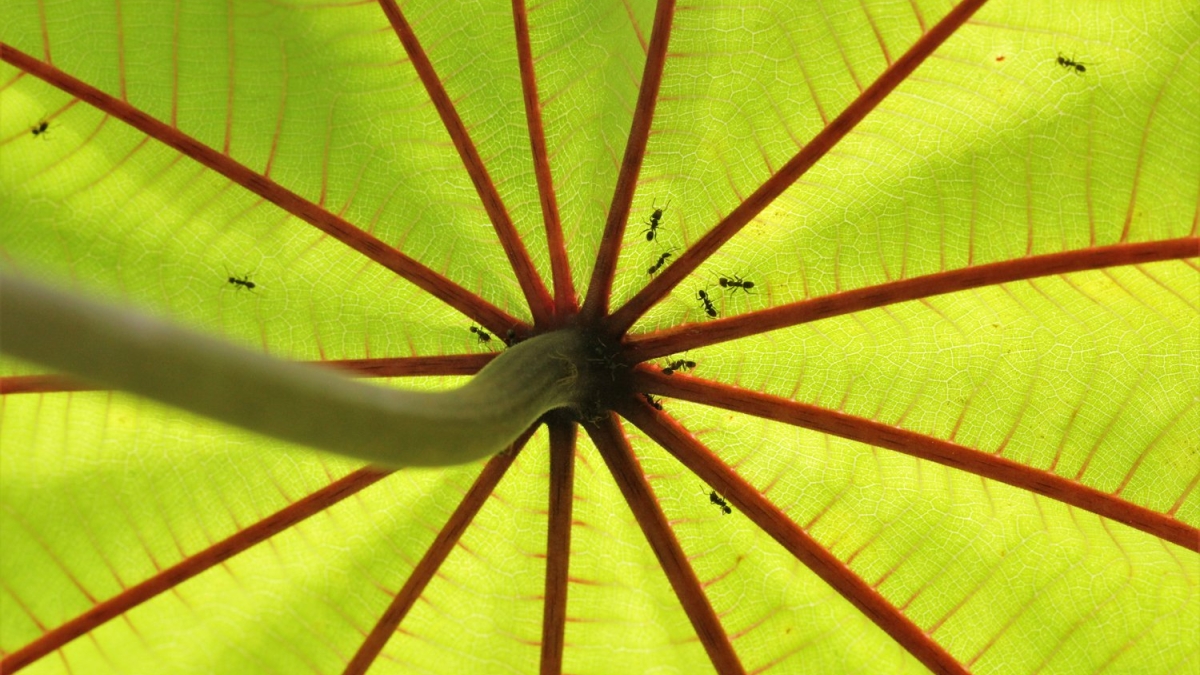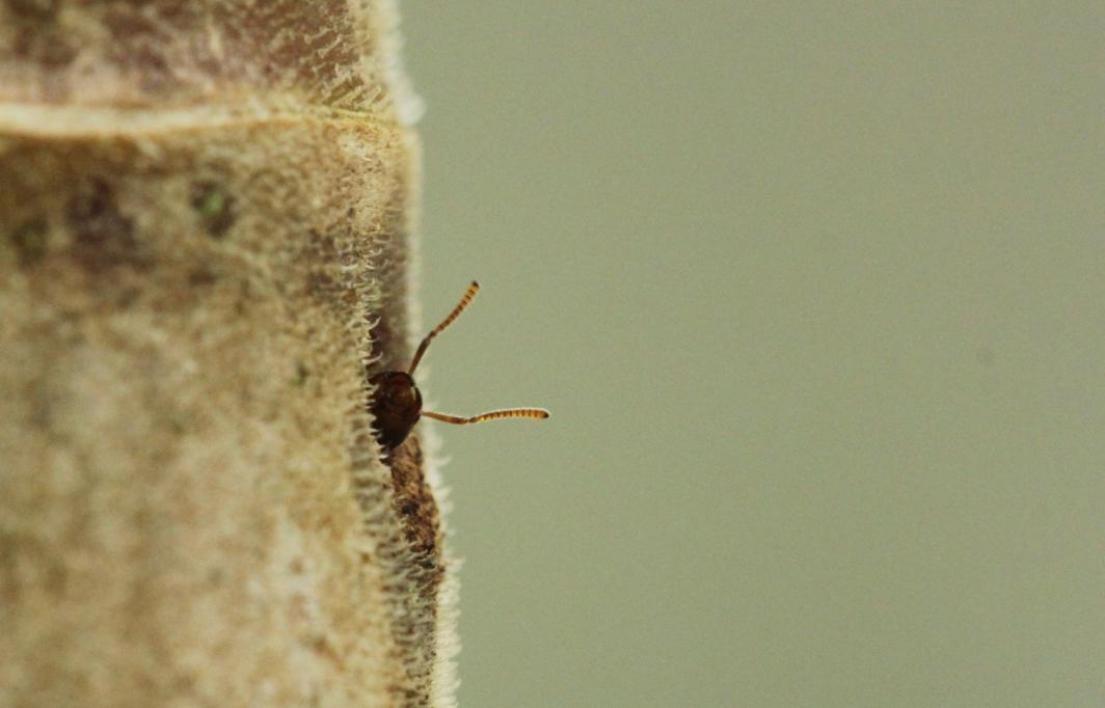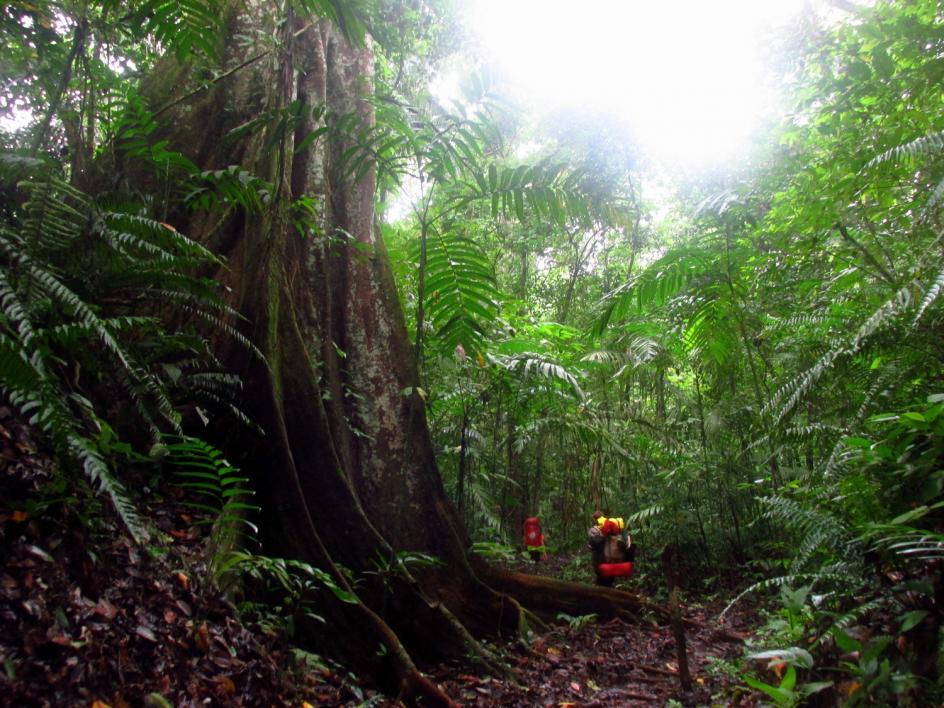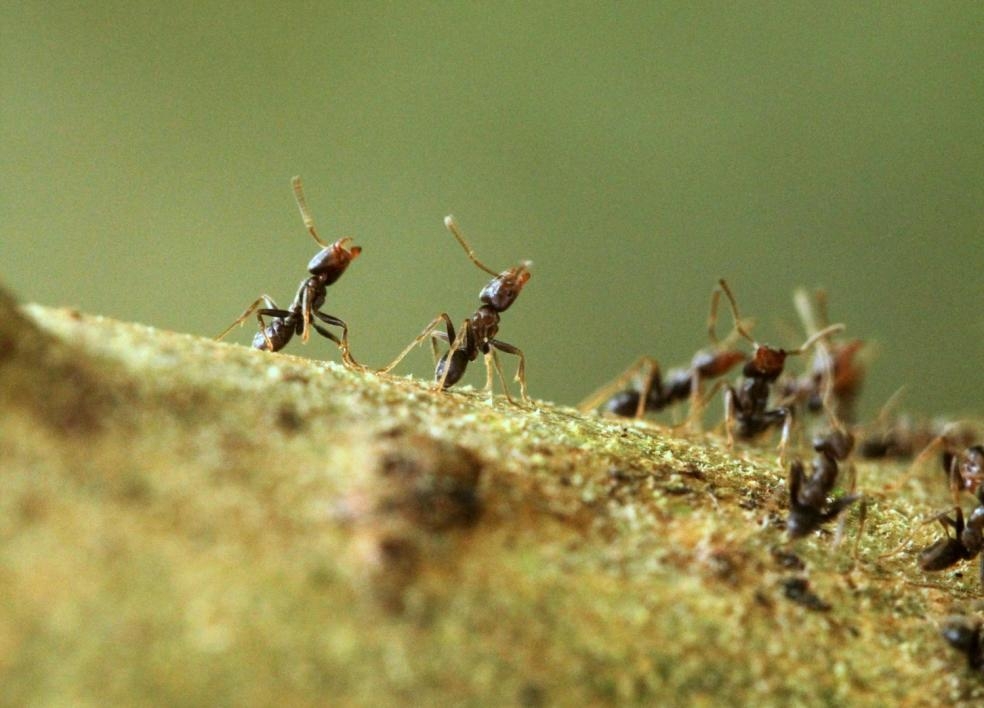Snobs and slobs: Ants are just like us
ASU animal behavior researcher finds that tree-anchored colonies in Panama display different personalities from their neighbors

You’re at your front door, engaged in the universal human pastime of judging the neighbors.
There’s Perfect Guy. His lawn looks like a flawless green carpet. His wood pile could pass Marine inspection. Your place is never going to look that good.
Then there’s The Slob, with the blue tarp over the carport and a car perched on blocks for years.
You and your neighbors, as it turns out, have a lot in common with ants — according to a recently published study by an Arizona State University animal behavior researcher.
Azteca ant colonies live in Cecropia trees, defending the trees from threats like choking vines and leaf-eaters. But some ants are more active in defending their tree homes than others, revealing that colonies themselves have personalities.
Peter Marting, a doctoral candidate in animal behavior in the School of Life Sciences, discovered that trees with more active, aggressive colonies have less leaf damage, suggesting that colony personality plays an important role in the mutually beneficent relationship between ant and tree.
“There are inherent, consistent differences from one colony in this tree versus one colony down the street in that tree. You could see it even without officially quantifying it,” Marting said. “... This colony just doesn’t respond to anything; they’re being very cautious and reserved about what they respond to. It’s hard to measure their intent, whether it’s caution or apathy or what it actually is. ... Other colonies are just full-throttle.”
Video by Pratt Lab
In the lowland tropical rainforests of Soberanía National Park in Panama, Marting studied five types of behavior: patrolling behavior, vibrational disturbance, response to intruders, response to leaf damage and exploratory tendency.
The study of animal personalities, or behavioral syndrome, is relatively new. The term was coined in a 2004 paper by biologist Andy Sih of the University of California, Davis.
“He pointed out that the field of behavior, in many fields, tend to look at the population average — take what everybody is doing and take the average — and say something about this population versus that population, and not exploring that variation,” Marting said. “Let’s say I take the mean of these ants I just studied, like the mean aggression level. I would be completely losing all this really valuable information about individuality. What’s up with this variation? Where does it come from? What are the consequences of having a certain personality type?”
Some animals will take an aggressive, bold approach, and others will be more cautious and reserved. There is a world of variation going on among them.
“That really opened up a lot of people’s eyes,” Marting said. “I think one of the things that’s really attractive about that concept in this field is that we interact with that conceptual framework on a day-to-day basis with the humans that we know. We’re judging personality all the time. This person has this, that person has that. It’s just something that’s so inherent to our everyday experience. ... It opens up the animal world in terms of thinking about their existence. ... I think that sparks a lot of interested researchers — certainly myself — in thinking about ‘OK, wow, I really want to know why is this bird like that and why is that bird like this?’”
Think about pets you’ve owned that had different personalities, regardless of breed. The same thing goes on in the wild. The advantage we have in observing this behavior in pets is we spend every day with them. It’s tough to study in the wild.
“With wild animals, we see one individual, once,” Marting said. “If you’re able to track wild animals and measure their behavior repeatedly in the wild, you get to reveal these personalities that exist. It’s really hard to do in the wild, so there are very few studies which have shown behavioral syndromes in ecological context in nature. The study system I’m using here with the ants that are locked in the trees — those trees aren’t going anywhere; colonies don’t move — I have a huge advantage in being able to roll right up to these trees and look at it for months or years.”
Don’t mistake anthropomorphism — assigning human traits to animals, long taboo in biology — for behavioral syndrome, Marting said.
“I think anthropomorphism is something you should be cautious about,” he said. “It’s also kind of a nice tool sometimes to open up different aspects of an animal’s existence that you can explore. I’m not as cautious as most biologists about anthropomorphizing. I think it can be a good tool to understand or get a story across. It should always be explored or backed up by research. I tend to be a little loose with it myself.”
He pointed to grackles hunting for crumbs on the Starbucks patio where he was sitting for an interview.
“These grackles right here — there’s probably all kinds of different personalities, and those personalities are interacting, and they have friends, if you would, interacting with some more than others. There’s this whole world of variation going on.”
Three follow-up papers by Marting are coming along. “Colony personality and plant health in the Azteca-Cecropia mutualism” was published in November in Behavioral Ecology.
All photos courtesy of Peter Marting; http://aztecacecropia.com
More Science and technology

SpaceHACK highlights student solutions to environmental challenges, digital divide
By Adrianna Nine About 250 students from around the world convened online and at Arizona State University on March 22 for the ASU Interplanetary Initiative’s second annual SpaceHACK for…

New AI for a new era of discovery
As the legend goes, in 1665, Sir Isaac Newton sat in his garden at Woolsthorpe Manor in England and looked on as a lone apple dropped from a tree branch, falling straight down. This chance encounter…

ASU receives 3 awards for research critical to national security
Three researchers in the Ira A. Fulton Schools of Engineering at Arizona State University have received grant awards under the Defense Established Program to Stimulate Competitive Research, or…




